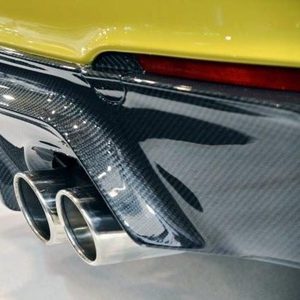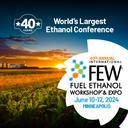Spinning plant waste into carbon fiber for cars, planes

fabiodevilla/Shutterstock.com
September 1, 2017
BY American Chemical Society
Using plants and trees to make products such as paper or ethanol leaves behind a residue called lignin, a component of plant cell walls. That leftover lignin isn’t good for much and often gets burned or tossed into landfills. Now, researchers report transforming lignin into carbon fiber to produce a lower-cost material strong enough to build car or aircraft parts.
The researchers presented their work at the 254th National Meeting & Exposition of the American Chemical Society. ACS, the world’s largest scientific society, is holding the meeting here through Thursday. It features nearly 9,400 presentations on a wide range of science topics.
“Lignin is a complex aromatic molecule that is mainly burned to make steam in a biorefinery plant, a relatively inefficient process that doesn’t create a lot of value,” says Birgitte Ahring, the principal investigator on the project. “Finding better ways to use leftover lignin is really the driver here. We want to use biorefinery waste to create value. We want to use a low-value product to create a high-value product, which will make biorefineries sustainable.”
Advertisement
Advertisement
In addition, there are potential benefits on the carbon fiber side of the equation. Carbon fiber made with lignin would be more sustainable and less expensive than fibers currently being produced. The carbon fiber found in modern cars and aircraft are typically made from polyarylonitrile (PAN), which is a pricey, non-renewable polymer. “PAN can contribute about half of the total cost of making carbon fiber,” Jinxue Jiang, says. He is a postdoctoral fellow in the Ahring laboratory at Washington State University. "Our idea is to reduce the cost for making carbon fiber by using renewable materials, like biorefinery lignin." Other researchers have tried to make carbon fibers from 100 percent lignin, Jiang says, but ended up with a fiber too weak for the automotive industry. "We wanted to combine the high strength of PAN with the low cost of the lignin to produce an automobile-grade carbon fiber."
To develop a strong yet cheap carbon fiber, Ahring’s team mixed lignin with PAN in varying amounts, from 0 to 50 percent. They melded the polymers together into a single fiber using a process called melt spinning. “You elevate the temperature of the polymer blend until it melts, so it can flow,” Jiang says. “Then, you spin these polymer melts until the fiber forms.” Using a variety of methods, including nuclear magnetic resonance spectroscopy, calorimetry and electron microscopy, the researchers evaluated the fibers’ structural and mechanical characteristics. They found that they could get away with as much as 20-30 percent lignin without sacrificing strength. The lignin carbon fibers could, the researchers say, have automobile applications such as internal parts, castings and tire frames.
As a next step, the researchers will be taking their fibers to an automobile manufacturing plant to test their strength in a real-world scenario. “If we can manage to get a fiber that can be used in the automobile industry, we will be in a good position to make biorefineries more economically viable, so they can sell what they usually would discard or burn,” Ahring says. “And the products would be more sustainable and less expensive.”
Advertisement
Advertisement
Funding for the research comes from the National Science Foundation Center for Bioplastics and Biomaterials along with Ford and Hyundai Motor Companies.
Related Stories
Ethanol Producer Magazine has announced the keynote speakers for the 2025 International Fuel Ethanol Workshop & Expo (FEW) being held June 9-11, 2025, at the CHI Health Center in Omaha, Nebraska. The general session will take place June 10.
Argent Energy, a leading European biofuels manufacturer, has officially launched Europe’s largest facility dedicated to producing biobased, technical-grade glycerin at its Port of Amsterdam site in the Netherlands.
Preliminary agenda released for 40th annual International Fuel Ethanol Workshop & Expo
Ethanol Producer Magazine announced this week the preliminary agenda for the 2024 International Fuel Ethanol Workshop & Expo (FEW) taking place June 10-12, 2024 at the Minneapolis Convention Center in Minneapolis, Minnesota.
A University of Alberta researcher has developed better ways to convert carbon dioxide, a harmful greenhouse gas, and glycerol, a leftover of biodiesel production, into value-added materials with wide-ranging uses including liquid hydrogen storage.
A group of some of the largest shrimp producers in Ecuador recently attended the Distillers Grains Technology Council's Distillers Symposium in Iowa with the USGC. The event provided an overview of the U.S. distillers’ industry.
Upcoming Events










